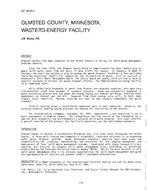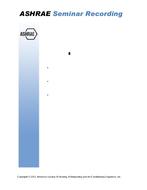Increasingly communities ranging in size from campuses to counties are trying to find effective ways to reduce their energy consumption and greenhouse gas emissions. The challenges these communities face include: determining the current distribution of energy use within the community, estimating the future energy use of the community, being able to estimate the reduction in energy by applying efficiency measures to the building stock, the impact of supply changes such as district heating implementation, as well as uniting the community to a common goal. These challenges can all be addressed using generalized energy modelling techniques.
This paper will outline the process a community can follow in order to create a master plan for achieving significant energy reduction in their communities over a 30 to 40 year period. The paper will detail how generalized energy modelling can be utilized effectively to create a baseline energy map of the community. This baseline will break the urban area into 50 – 100 generalized models that accurately represent the communities building stock in age and building type. This baseline map can then be calibrated with utility data for the area. Efficiency measures can then be applied to these buildings to predict the performance of these communities as a whole. Case studies will be used to illustrate work done in this area and results achieved. Site energy reduction isn’t the only challenge to achieve significant greenhouse gas reductions and energy savings, addressing the supply side of the buildings will also be touched on, however this will not be the focus of this paper.
Citation: ASHRAE/IBPSA-USA Bldg Simulation Conf, Atlanta, GA, Sept 2014
Product Details
- Published:
- 2014
- Number of Pages:
- 9
- File Size:
- 1 file , 3 MB
- Product Code(s):
- D-BSC14-31


